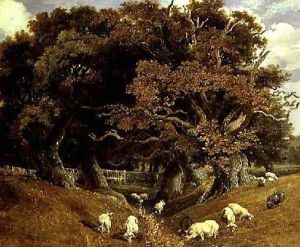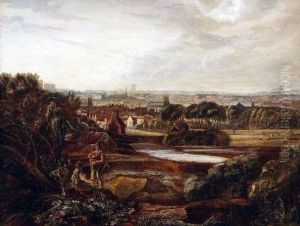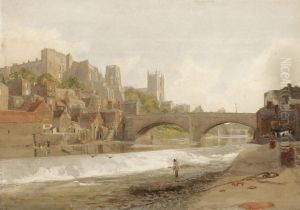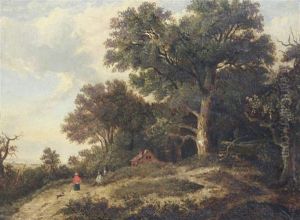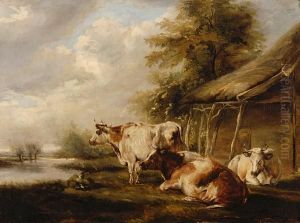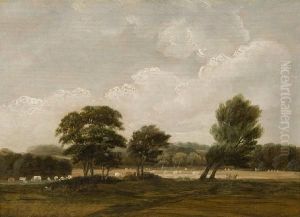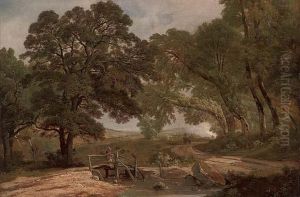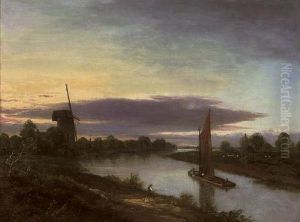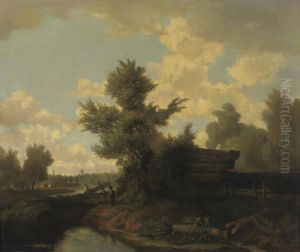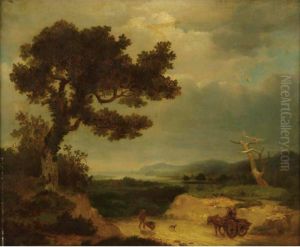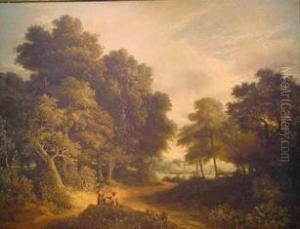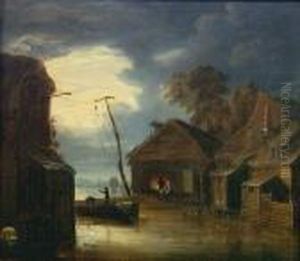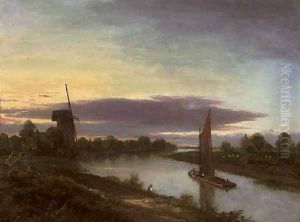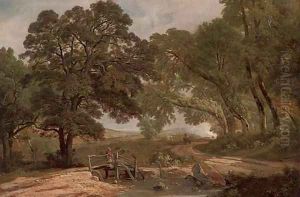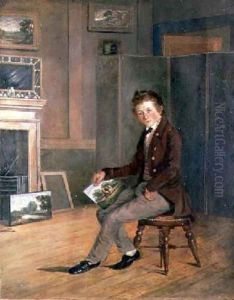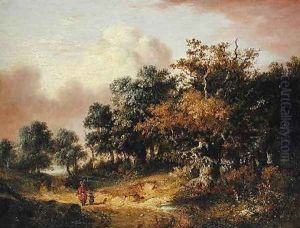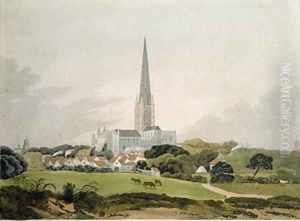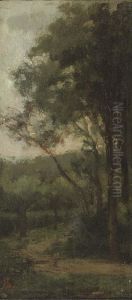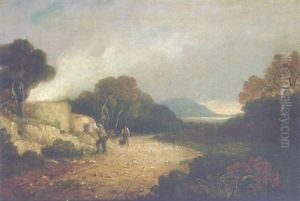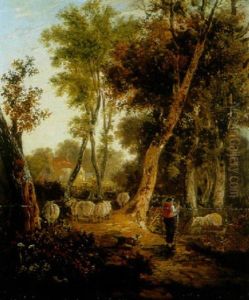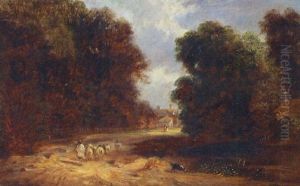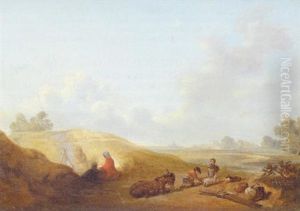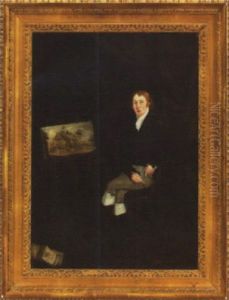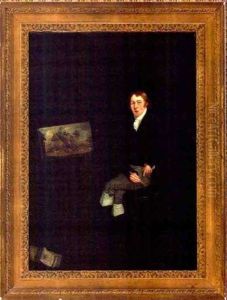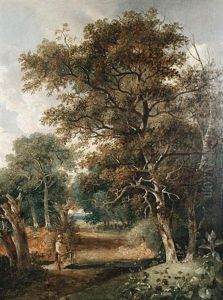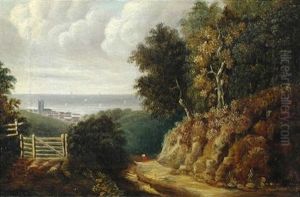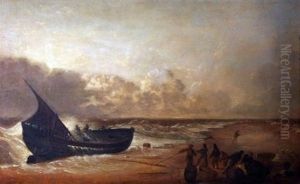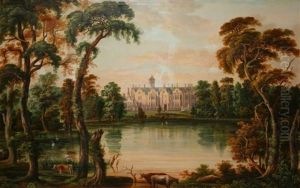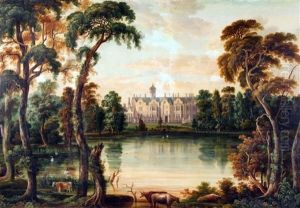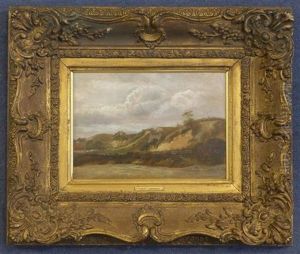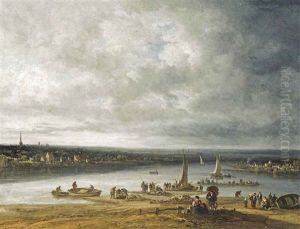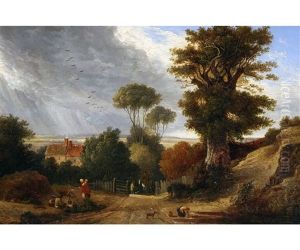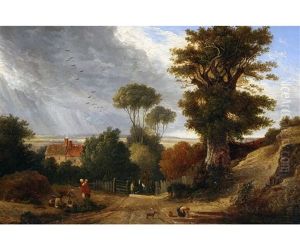Robert Ladbrooke Paintings
Robert Ladbrooke was an English landscape painter born in 1768, known for his picturesque depictions of the Norfolk countryside. His work is notably associated with the early 19th-century Norwich School of painters, a movement that is considered pivotal in the development of English landscape painting. Ladbrooke began his career in a rather unconventional manner; he initially worked as a printer before fully dedicating himself to painting. His transition to the arts was influenced by his association with John Crome, another prominent figure in the Norwich School, with whom he not only developed a close friendship but also co-founded the Norwich Society of Artists in 1803. This society was instrumental in promoting the works of local artists and is recognized for its significant contribution to the British art scene.
Ladbrooke's artistic journey was deeply rooted in his love for the Norfolk landscape. His paintings often depicted serene rural scenes, churches, and cottages, imbued with a sense of realism and attention to atmospheric effects. This focus on capturing the essence of the English countryside set him apart from some of his contemporaries, who were more inclined towards romantic or idealized landscapes. Despite facing financial difficulties throughout his career, Ladbrooke's dedication to his craft never waned. He travelled extensively within Norfolk to find inspiration for his works, a testament to his commitment to portraying the natural beauty of his surroundings.
His legacy, though not as widely recognized as some of his contemporaries, has been preserved through the collections of various British institutions. His work continues to be appreciated for its contribution to the Norwich School's ethos of depicting the English landscape with authenticity and sensitivity. Robert Ladbrooke's death in 1842 marked the end of an era for the Norwich School, but his paintings remain a testament to his passion for the natural world and his pioneering role in the development of English landscape painting.
